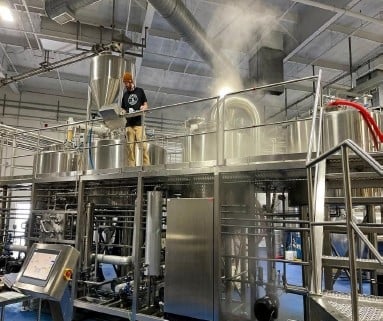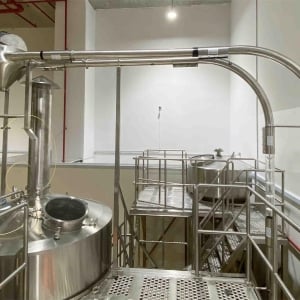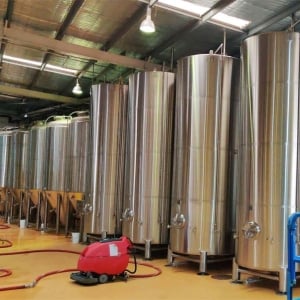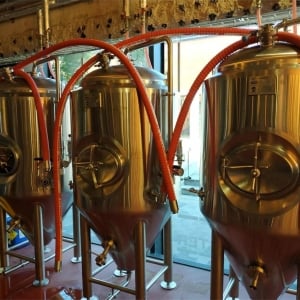3 BBL Stackable Fermenters
Stackable fermenters are a popular choice for professional and home brewers looking to upgrade their systems. 3 BBL Stackable Fermenters provide a balance of batch size and footprint for many small to mid-sized brewing setups. This guide will cover key details on 3 BBL stackable fermenter choices to consider from capacity to custom layouts.
Overview of 3 BBL Stackable Fermenters
Stackable fermenter systems allow efficiently utilizing vertical space by climbing upwards. 3 BBL units strike an ideal batch volume balance – larger than homebrew sizes but smaller than mass production. Key specs per 3BBL fermenter include:
Table 1: 3 BBL fermenter equipment specifications
| Parameters | Details |
|---|---|
| Batch volume | 3 barrels or 93 gallons or 352 liters |
| Height | ~ 6 – 7 feet |
| Diameter | ~ 2 – 3 feet |
| Weight | 150 – 300 lbs when empty |
Stacking multiples allows expanding capacity as needed while minimizing floor space. Units are modular for customized configurations. We’ll explore popular equipment choices next.
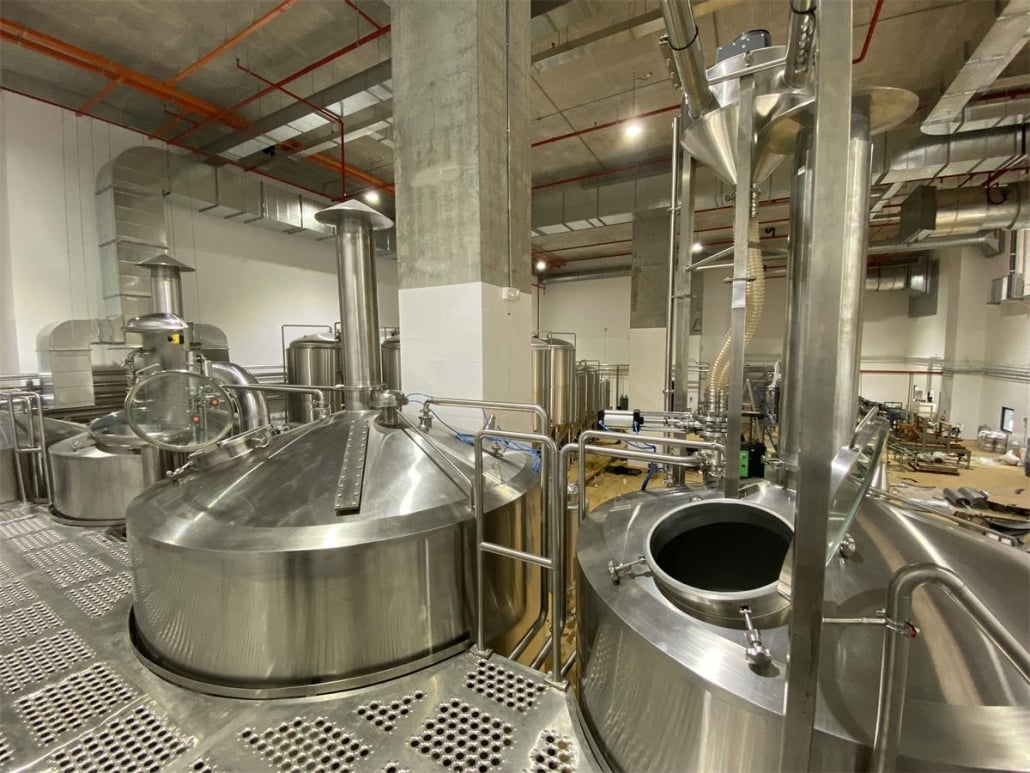
Types of 3 BBL Stackable Fermenter Systems
Many brewing equipment manufacturers offer 3 BBL stackable fermenter models from stainless steel to plastic. Let’s compare the main options:
Table 2. Major 3 BBL stackable fermenter types
| Type | Construction | Pros | Cons |
|---|---|---|---|
| Stainless steel | Stainless interior and exterior | Durable, sanitary, customizable | Expensive, heavy |
| Plastic | Rotationally molded plastic or HDPE | Affordable, lightweight | Scratches over time |
| Mix | Stainless conical with plastic jacket | Balance of cost and benefits | Limits customization |
Now let’s look at key 3 BBL stackable fermenter system suppliers and components in more detail…
3 BBL Stackable Fermenter Manufacturers
Reputable brewery equipment manufacturers for 3 BBL stackable fermenters include:
Table 3: Major 3 BBL stackable fermenter equipment suppliers
| Supplier | Offerings | Price Range |
|---|---|---|
| Ss Brewtech | Uni-tanks, Flex-tanks | $$$ |
| Spike Brewing | Uni-tanks, Flex-tanks | $$ |
| Blichmann | Stainless Uni-tanks | $$$ |
| Keg King | Plastic uni-tanks | $ |
These companies provide both off-the-shelf and customizable 3 BBL stackable fermenter solutions. Uni-tanks feature an all-in-one stainless steel conical fermenter design whereas Flex-tanks utilize a plastic outer jacket around stainless. Costs scale from thousands for stainless models to budget plastic vessels. We’ll break down key design choices next.
3 BBL Stackable Fermenter Design Features
When selecting 3 BBL stackable fermenters, brewers can choose from conical or cylinder profiles and customize components:
Table 4: 3 BBL Stackable Fermenter Design Choices
| Parameter | Options | Considerations |
|---|---|---|
| Shape | Conical or cylindrical | Conicals for compactness, cylinders provide more uniform environment |
| Construction | Stainless, plastic, stainless + plastic jacket | Stainless most durable long-term, plastic most affordable |
| Temperature control | Glycol, steam, electric | Glycol recommended for precise fermentation temperature management |
| Accessories | Thermowells, sanitary fittings, sampling valves, casters, ladders, etc | Depends on process needs and degree of automation |
Additional design factors relate to dimensions, capacity, and ergonomics:
Table 5: 3 BBL Stackable Fermenter Sizing Parameters
| Parameter | Typical range |
|---|---|
| Height | 6 – 7 ft |
| Diameter | 2-3 ft |
| Capacity | 3 BBL (93 gal) each, scale by stacking |
| Stand height | 12 – 18 inches for cleaning access |
| Ladder width | 16 – 24 inches for ergonomic access |
Ideally, stackable fermenters minimize footprint while allowing comfortable user access for loading, cleaning, checking Gravity/pH, and yeast harvesting.
Planning A 3 BBL Stackable Fermenter Layout
Properly sizing and locating 3 BBL stackable fermenters is critical for an efficient brewhouse layout. Consider:
Table 6: 3 BBL Stackable Fermenter Placement Planning
| Parameter | Best Practices |
|---|---|
| Quantity | Size for max production volume, leave room to scale |
| Location | Near brewhouse for transfers, temperature controlled room preferred |
| Flooring | Smooth, seamless, non-porous, with floor drains |
| Space | 2 ft clearance on all sides for access |
| Stacking | Max 3-high recommended without hoist system |
| Height | At least 10 ft to top unit |
Ideally position primary fermentation stacks near the brewhouse, with secondary aging stacks in a cooler room for lagering and fruit additions if applicable. Now let’s walk through the typical 3 BBL stackable fermentation process…
The 3 BBL Stackable Fermentation Process
Here are the key steps when fermenting with 3 BBL stackable tanks:
- Cleaning and sanitation – Clean and sanitize thoroughly per manufacturer instructions, typically with heat or chemicals
- Yeast pitching – Aerate wort thoroughly while transferring, pitch yeast based on cell count calculations
- Active fermentation – Control temperature profile throughout primary fermentation stage, normally lasting around 1 week
- Resting – Allow beer to rest after active fermentation, check gravity daily to confirm complete attenuation
- Transfer or aging – Either transfer to serving tank and carbonate, or transfer to secondary aging tank for lagering, fruit contact, etc.
- Dry hopping – For IPAs, dry hop during active fermentation for biotransformation or after for aroma
Utilize the sample valve to monitor conditions. Conicals allow harvesting yeast from the collection ball valve. Enjoy superior beer quality from fermenting in 3 BBL stackable tanks!
Maintenance For 3 BBL Stackable Fermenter Systems
To sustain performance and longevity of 3 BBL stackable tanks:
Table 7: Maintenance best practices
| Parameter | Guidelines |
|---|---|
| Cleaning | Clean thoroughly after each use with chemicals and/or 180°F+ water |
| Sanitation | Rotate sanitizer weekly – iodine, peracetic acid, quaternary ammonium |
| Gaskets | Replace yearly or if any sign of cracks or wear |
| Hardware | Check fittings, valves, seals annually, replace if necessary |
| Accessories | Verify condition of casters, ladder, jacket, probes, insulation |
| Calibration | Re-calibrate tank volume markings and probes every 2-3 years |
Preventative maintenance minimizes risk of contamination or leaks while supporting precise brewing.
How To Choose A Reliable 3 BBL Stackable Fermenter Supplier
When comparing 3 BBL stackable fermenter system manufacturers:
Table 8: Vetting and selecting reliable suppliers
| Consideration | Best Practices |
|---|---|
| Reputation | Choose established vendors with proven track records |
| References | Ask for and contact 1-2 brewery customer references |
| Support | Ensure full technical documentation and assistance |
| Warranty | Look for at least 1 year, ideally 2-5 years on tanks |
| Lead time | Confirm production and delivery timelines |
| Customization | See if they offer customized options vs only standard products |
By validating suppliers upfront, brewers gain confidence in receiving high-quality 3 BBL fermentation equipment engineered for their unique needs.
Key Pros and Cons of 3 BBL Stackable Fermenter Systems
Table 9: Comparison of 3 BBL stackable fermenter advantages and limitations
| Pros | Cons |
|---|---|
| Vertical footprint saves significant floor space | Height limits can require excavation or reinforced roof |
| Modular, expandable capacity by stacking more | Stacking/unstacking requires equipment like pallet jacks or hoists |
| Customizable to unique process requirements | More costly than single primary open fermenter |
| Independent fermentation temperature per vessel | Cleaning underneath tanks can be challenging |
| Flexible fermentation schedules by tank | Potential temperature gradient top to bottom |
| Conicals allow yeast harvesting from collection ball valve | Heavy to move once installed |
With thoughtful design and placement, stackable fermenters maximize quality and efficiency.
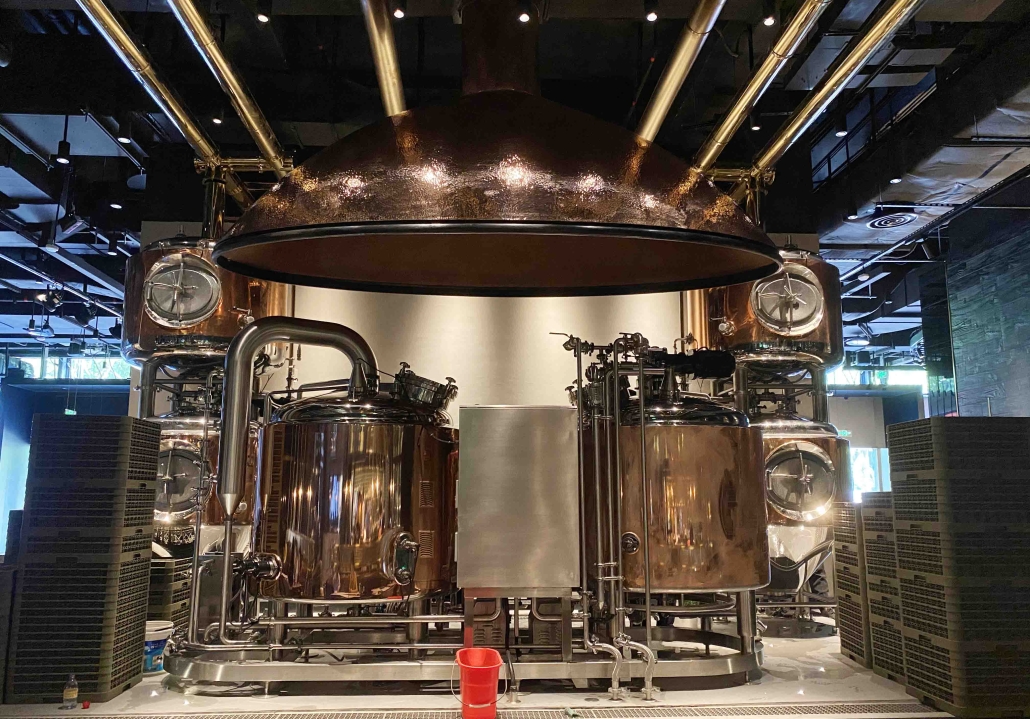
FAQs
Q: What temperature control systems work best for 3 BBL stackable fermenters?
A: For precise temperature management, a glycol chiller system is recommended. Options include a central chiller with distribution to fermenters, jackets for cooling/heating, or chilling coils inside each tank. Glycol circulation allows dialing in temperatures within 1°F.
Q: How many 3 BBL fermenter tanks are optimal for a typical microbrewery to start with?
A: A good starting point is 2-4 primary 3 BBL fermenters, with capability to expand. This allows 1-2 week fermentation cycles and flexible production scheduling. Add 2-4 more units for secondary aging if incorporating lagering or fruiting stages.
Q: Should airlocks or blow-off tubes be used on 3 BBL stackable fermenters?
A: Due to large batch sizes, blow-off tubes are highly recommended during active fermentation. Attach to a collection vessel to avoid messy clogs or overflows which can lead to contamination and lost product.
Q: What design factors help simplify cleaning and filling 3 BBL stackable tanks?
A: Determine optimal stand height for pump clearance, include sample valves for monitoring, ensure adequate ladder width for body access, keep units on casters, and utilize sanitary fittings like tri-clover. Design your system for easy cleaning access underneath tanks.

